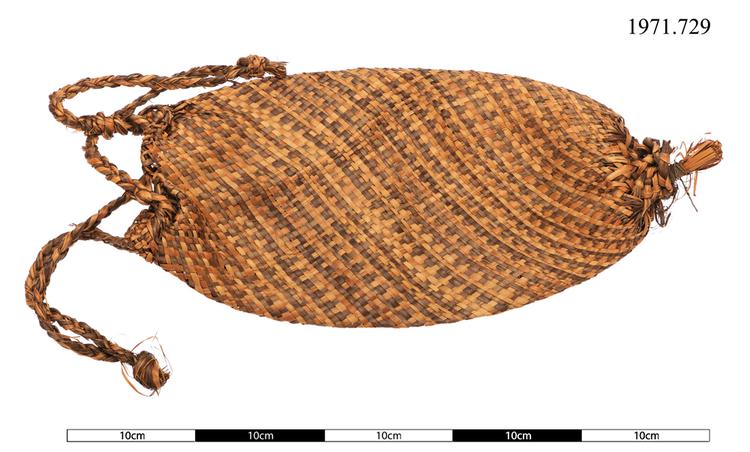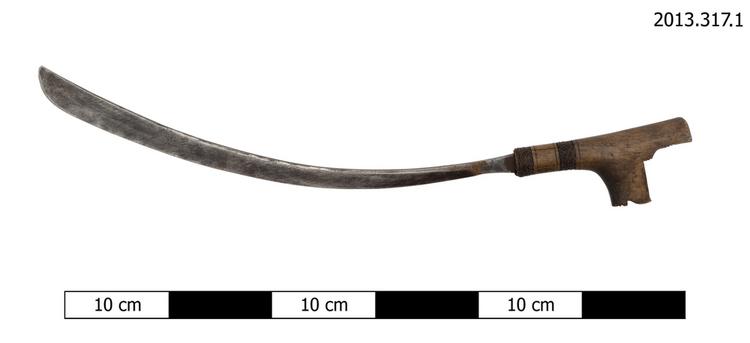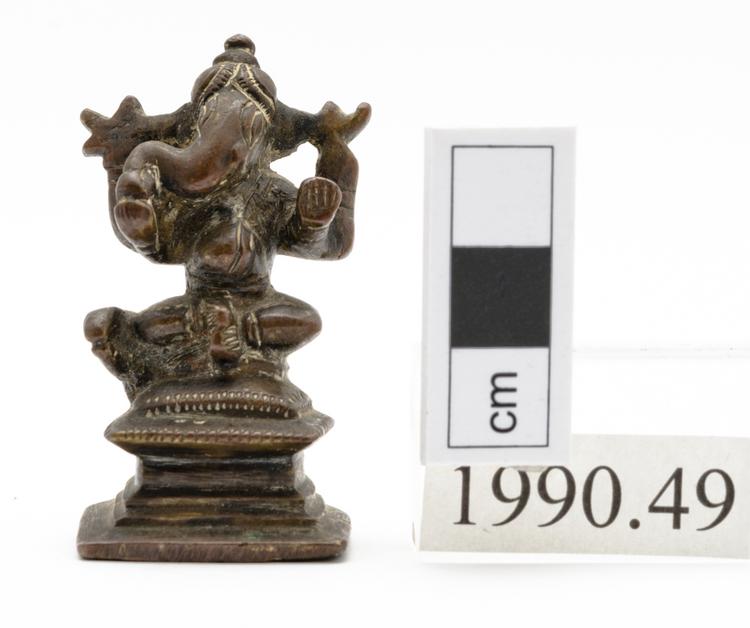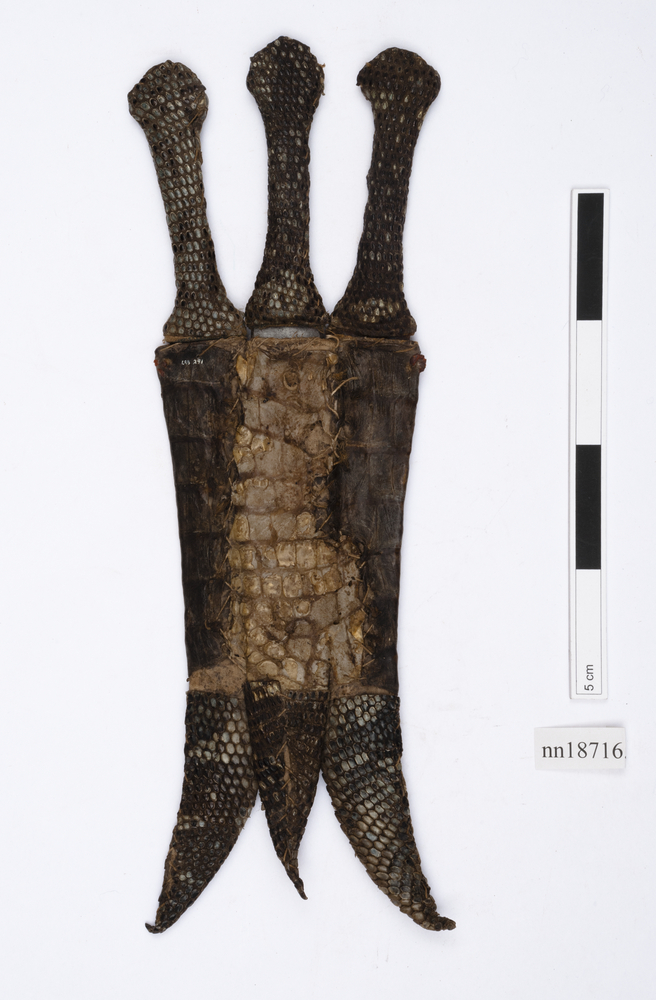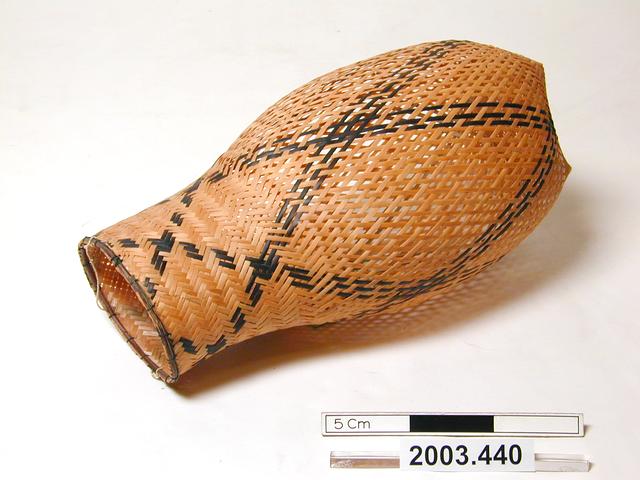
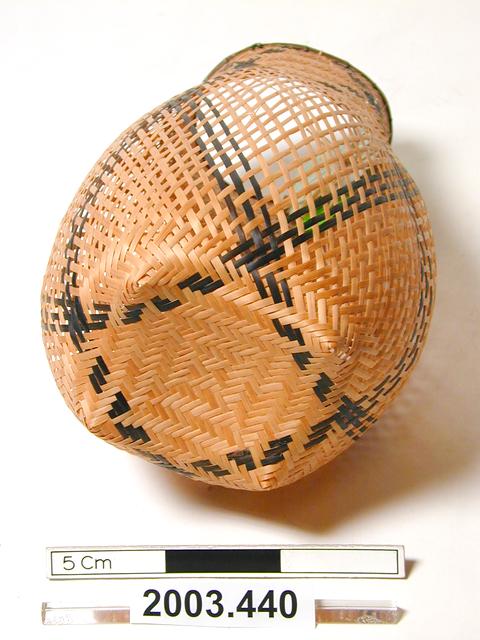
Hurudi egg basket purchased from the Amerindian Shop in Georgetown. The Arawak of Kabakaburi Mission Station, who would have used them, traditionally to gather the eggs of wild birds, made the egg baskets. The baskets are shaped in a way that they are flexible enough to carry several eggs. The basket is also designed to allow very little movements of its contents so as to avoid breakages. The darker patterns that run through the basket were made of dyed fibres. The dye was obtained from the bark of a certain tree.
A tall basket, with the areas adjacent to the base and the mouth woven tightly but the main central part only lightly woven for flexibility. It is made of light fibres with a pattern of dark fibres (three across) in a diagonal check crossing at very wide intervals. The base of the basket is square, but the mouth is oval, and both are narrower than the main body of the basket. There is a handle of finely twisted or plaited fibre across the mouth of the basket.
A tall basket, with the areas adjacent to the base and the mouth woven tightly but the main central part only lightly woven for flexibility. It is made of light fibres with a pattern of dark fibres (three across) in a diagonal check crossing at very wide intervals. The base of the basket is square, but the mouth is oval, and both are narrower than the main body of the basket. There is a handle of finely twisted or plaited fibre across the mouth of the basket.



